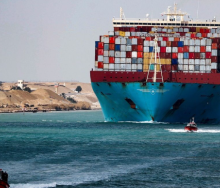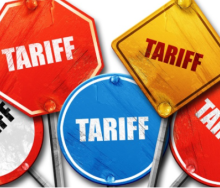Journal of Commerce reports that the economies of scale that are driving carriers to replace their fleets with mega-ships will result in the consolidation of shipping lines or in the reduction of competition on customer service, according to a panel on the growth of ship sizes at the 12th annual Trans-Pacific Maritime Conference in Long Beach.
“The container industry will shrink to seven to 10 carriers by the mid-2020s,” said Lars Jensen, CEO and partner of Seaintel Maritime Analysis. “It may be eight, it may be 10, but there will be fewer players.”
Jensen added that industry consolidation, which has stalled in recent years but will start again by 2015 because of the need to order and pay for more ships with capacities of more than 10 000 TEUs.
The capacity of the global container fleet will grow by 7% per year through 2015, but he sees the capacity of the new mega-ships being delivered will increase at a 30% annual rate.
“From now until the end of 2014, the mega-ship fleet will grow by 120%,” said Jensen. “By 2015, mega-ships will account for more than half of the capacity of the total container fleet.”
The cascade effect will also involve SA trades in this overcapacity scenario.
As more large ships enter the Asia-Europe and the trans-Pacific trades, Jensen added, carriers will cascade smaller and less-efficient ships on the trans-Atlantic and the north-south trades, which have not been hit by the overcapacity that has caused freight rates to plunge. But he noted that these trades, which have had relatively stable freight rates, will also start to suffer from too much capacity.












